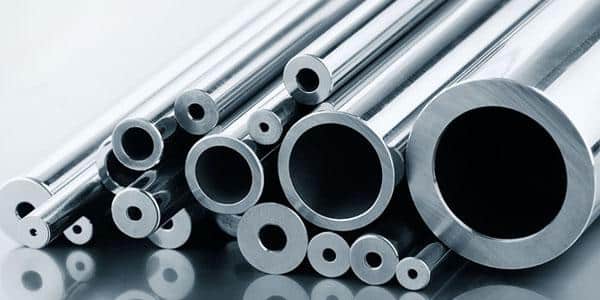Stainless steel and special material
Browse our stainless steel and special materials products by category.

Seamless and welded stainless steel tubing in rods
Come and discover our range of welded stainless steel tubing in rods.

Seamless and welded stainless steel tubing in coils
Come and discover our range of welded stainless steel tubing in coils.


TUBES ACCORDING TO ANSI STANDARDS
Come and discover our range of tubes according to ansi standards.

DUPLEX AND SUPERDUPLEX TUBES
Come and discover our range of duplex and superduplex tubes.


TUBES ACCORDING TO BWG STANDARDS
Come and discover our range of tubes according to BWG standards.
The main characteristics of stainless steel
Steel is an alloy of iron (Fe) and Carbon (C) that is usually divided into two macrocategories:
- Non-alloy steel which corresponds to carbon steel;
- Alloy steel that is combined with another element to create an alloy. It is also more resistant to the contact with other substances.
Alloy steel are, in turn, divided in two groups:
- high alloy steel;
- low alloy steel: they are widely used in the construction, railway, structural, military, energy, electric, manufacturing electronics industry, in the industrial sector and in all cases in which welding is required.
Stainless steel consists of different subgroups due to many factors (such their chemical composition) that influence steel microstructure. The most important subcategories are; ferritic, martensitic, duplex and austenitic.
The most used is austenitic steel which consists of an high percentage of chromium and nickel and a low percentage of carbon. Due to this specific chemical composition it has got a considerable resistance to chemical corrosion or corrosion caused by climate factors and to oxidation.
In fact, its chemical elements easily react to the surroundings.
Besides corrosion resistance, the other main characteristics are:
- Easy cleaning that guarantees an high level of hygiene;
- easily forgeable and workable.
Chromium percentage is between 12% and 18%. During chromium oxidation, an external and thin coating of oxide develops and protects from oxygen molecules contact and from other chemical factors. The so-called process of passivation is generated artificially or naturally.
Stainless steel types differ in the percentage of the chemical elements the alloy consists of. The most frequent categories are:
- 304 - Cr (18%) Ni (10%) C (0,05%);
- 304 L - (Low Carbon): Cr (18%) Ni (10%) C ( 0.03%);
- 316 - Cr (16%) Ni (11.3/13 %) Mo (2/3 %);
- 316 L - (Low Carbon): Cr (16,5/18,5%) Ni (10,5/13,5%) Mo (2/2,25%) C ( 0.02%).
The main difference between 304 and 316 is the presence of molybdenum together with an higher quantity of nickel in the second one. Only in some circumstances, the first type is more resistant; this is for example the case of nitric acid.
Stainless steel 316 is widely used in the construction industry especially outdoor, but it is less suitable for environments exposed to corrosive agents such us sea water and for some marine applications.
On the other hand, including a lower quantity of carbon and thanks to the molybdenum, stainless steel 316L is particularly resistant to corrosion so that it is, in turn, used also in those environments exposed to aggressive agents.
For instance, it is, in fact, used in piping systems of the food, chemical, petrochemical, nuclear and paper industry.
Stainless steel 304 is used in the same kinds of industry, because it has a good resistance to corrosion, but it must be used for lower degrees.
There are also other kinds of austenitic steel such as:
- AISI 904L: the high level of nickel and molybdenum make it more resistant to corrosion compared to other kind of steel; this is the reason why it can be used in almost extreme conditions. It has also a good weldability. Thanks to its characteristics, it is widely used in paper, pulp, chemical, pharmaceutic industry and in marine environments.
- 6MO: it belongs to the super austenitic category. Its best feature is ductility. It is used in high-risk corrosive environments; so, it is often used to make valves, pumps and tubes in the oilgas field.
ARE YOU INTERESTED IN THE PRODUCTS PRESENTED?
Fill in the form and we will contact you!
We have a wide variety of fittings: twin ferrules compression fittings; forged fittings.
Discover our fittings now!Explore the main reference sectors for the products we deal in all over the world.
Discover the fields of the steel world